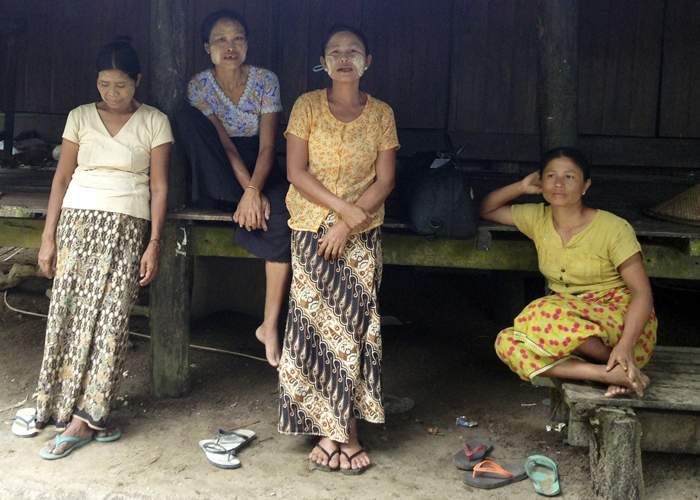Objective:
Students will be able to analyze articles presenting diverse perspectives on the impact of global demand for land in order to debate how a country’s land should be used and by whom.
Essential Questions:
- How does an author balance different perspectives on an issue?
- How should a country manage its natural resources?
- What are the ideal relationships among the following entities: A country’s citizens, a country’s government and international companies utilizing a country’s natural resources for business?
Warm-up:
- What does it mean to be objective? How is being objective different from being subjective? What are the challenges of being objective? Write your definition and then discuss with a partner and/or the class to determine a working definition for the day.
- Pick an issue to analyze objectively. (Examples: Should we buy clothes from a country where workers are paid less than minimum wage? Should your community welcome a big company that would pay low wages, but also provide a lot of jobs? Should students take standardized tests?)
- Create an objective analysis of the controversial topic you chose. Work on your own, or with a partner, to make a chart with a column defending each side of an issue.
- Be prepared to share your responses with the class. Consider the following before you discuss:
- What was challenging about writing an objective analysis?
- Did you find yourself supporting one side more than the other?
- How could you present your information in a way that doesn’t present an opinion?
Introducing the Lesson:
Today’s lesson will analyze how authors present different perspectives on the impact of a global rush for land and natural resources. The articles come from the Financial Times project "The Great Land Rush."
1. Read the following project description and analyze the objectivity of the language. Quickly write down why you think the project is called "The Great Land Rush." Be prepared to discuss your response.
"A global race has begun for one of the world's most precious resources - land. Across continents, big investors are pouring in billions. They promise progress. But their arrival can upend livelihoods - and spark life-and-death struggles. FT correspondents report from Ethiopia, Myanmar and Indonesia."
2. Work with a partner to predict the following about each country discussed in this project (Ethiopia, Myanmar, Indonesia):
- What natural resources do you think companies are seeking in each country?
- How do you think international companies are positively and negatively affecting these countries and their citizens?
3. Share your responses with the class.
4. Review the resources attached to see if your predictions were correct. As you read, also consider the following:
- Who is impacted when an international company begins using the resources in a country? And how?
- How does the author structure the story? What tools does the author use to present an objective story?
- How do you feel about how countries are being affected when their land is used by international companies?
- How would you present the issue objectively?
Introducing Resource 1: Ethiopia
1. Review the article and answer the questions attached. As you read, keep track of different perspectives on the roles of international companies in Ethiopia using a chart like the one below:
|
Support having international companies in Ethiopia |
Against having international companies in Ethiopia |
|
Evidence (name of subject, quote) |
Evidence (name of subject, quote) |
| Ex: "After colonisation and slavery, Africans are still not able to use their resources," Mr. Ahmed went on. |
Ex: "I get happy when I see an Anuak boy operating a Caterpillar machine the way an American boy would do on the Mississippi delta." |
2. Share your responses and work with the class to create a group chart.
3. Quickly discuss what techniques the author used to present both sides of the story.
Introducing Resource 2: Myanmar
1. Review the article and answer the questions attached. As you read, keep track of different perspectives on the roles of international companies in Myanmar using a chart like the one above.
2. Share your responses and work with the class to create a group chart representing both sides of the argument.
3. Quickly discuss what techniques the author used to present both sides of the story.
Classroom Discussion: Writing Objectively
1. On your own, compare and contrast how the authors used structure, language and imagery to present both sides of an issue. Write your responses to the following questions: How objective were the pieces? What were moments that clearly articulated both sides of the issue? Were there moments where the author appeared to have an opinion? What language did the author use to communicate that?
2. Discuss your responses with the class.
3. One option for a starting point to your class discussion is to focus on the first paragraphs from each piece:
Ethiopia: As an orchestra of mosquitoes and crickets greeted the dusk, Bedlu Abera looked out over fields of rice stretching across the Ethiopian lowlands towards the horizon. A flicker of contentment crossed his face. “It’s satisfying,” he said. “We are making progress.”
Myanmar: Hla Ohn May still weeps when she takes the road past the twisted white piping of the gas terminal near the western Myanmar town of Kyaukphyu. The 46-year-old farmer and mother of five once owned land on this green strip perched above the blue waters of the Bay of Bengal.
Classroom Debate: How should a country’s land be used and by whom?
1. On your own, write your response to the following question: "How should a country's land be used and by whom?" Use evidence from the articles to support your answer.
2. In groups, or as a class, engage in a debate that uses evidence from the articles you read to answer the question above.
3. Choose someone in the class take notes on the points made for both sides of a debate. If the class is generally supporting one side, try to come up with points that support the other side to push the debate forward.
Note: If you would prefer to break into teams that then pick a representative to debate, here is a rubric that can be used to structure and assess the discussion.
Reflection:
Write a short journal entry describing your experience analyzing today’s topic. Be sure to address the following topics:
- How do you feel about how land is being used in Myanmar and Ethiopia after reading the articles?
- How did it feel to explore these issues objectively?
- Why is it important for journalism to present both sides of a story? And what might be the challenges in doing that?
- How do the topics of The Great Land Rush relate to you?
Share your reflection with the Pulitzer Center by emailing [email protected].
Extensions:
Option 1. Go back to the issue you started with at the beginning of class and work in teams to revise your list of supporting and opposing points. Break into groups and debate how you feel about the issue using what you have practiced about objective reporting to inform your argument. Challenge yourself to address points that support and oppose your own view on the issue.
Option 2. Read the third chapter of the Financial Times series “Indonesia” and track the supporting and opposing views in that piece. Use the examples from your chart to write an objective summary of the text.
Option 3. Use the following quotation from the Ethiopia piece as inspiration to write a journal entry from the perspective of a farmer in Ethiopia that is being impacted by an international company:
“Some of the youngsters in Ethiopia kits might find themselves spurred to resist the government, like Mr Okello and the Nairobi refugees. Others might embrace a job at Saudi Star, maybe rising to run the farm. But it is hard to see how any will do both. If a global land rush is at hand, Gambella’s rift will not be the last.”
In your journal entry, use details from the article to inform how you describe the life of your character. How is this person impacted by the company? What will they do?
This lesson plan and classroom resources ask students to analyze reporting that presents diverse perspectives on the impact of global demand for land. Through discussion, writing and close reading of primary source documents, students explore how journalists objectively present an issue. They also use evidence from articles covering land rights issues in Ethiopia, Indonesia and Myanmar to debate how a country’s natural resources should be used.
CCSS.ELA-LITERACY.RI.9-10.3
Analyze how the author unfolds an analysis or series of ideas or events, including the order in which the points are made, how they are introduced and developed, and the connections that are drawn between them.
CCSS.ELA-LITERACY.SL.9-10.1.D
Respond thoughtfully to diverse perspectives, summarize points of agreement and disagreement, and, when warranted, qualify or justify their own views and understanding and make new connections in light of the evidence and reasoning presented.
Lesson Facilitation Notes:
1. The lesson plan is written for students to be able to explore the resources independently and reflection exercises independently.
2. Students may need to have an extra sheet of paper, or a blank online document open, to answer the warm up, comprehension and extension questions.
3. The lesson lists several extension exercises. Students could choose one or work through all of the listed exercises.
4. The warm up and post-reading reflections in this lesson could also lead to rich conversations. You may want to work through the lesson along with the students and denote moments for interactive activities.
5. With questions about this lesson, contact [email protected]





